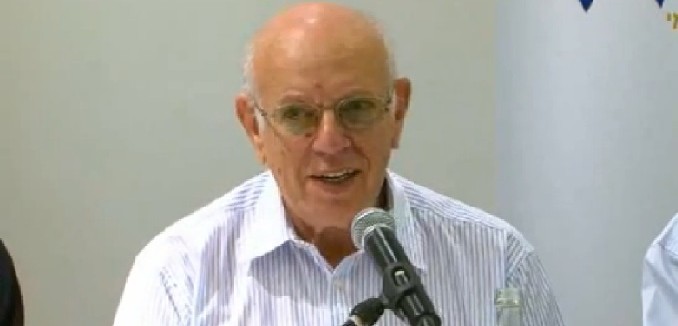Analysts and diplomats continue to debate the consequences of a potential military strike against Iranian nuclear facilities. Last week Israel’s minister for international affairs Yuval Steinitz told an interviewer that Iranian retaliation against Israel in the aftermath of any strike would do “very limited damage” because Israel “can intercept many” of the missiles Tehran is likely to fire.
Meanwhile debate continues as to what a strike by may do to Iran itself. A recent Israel study contradicted the conclusions of an earlier one, which claimed that up to 85,000 Iranians could be killed by an attack.
The Israeli newer study was written Dr. Ephraim Asculai, an expert at Israel’s Institute for National Security Studies (INSS). Asculai’s study questioned the potential environmental damage and health hazards which would result from an attack. Asculai’s experience includes serving for nearly 40 years at the Israeli Atomic Energy Commission (IEAC). He has also worked for the International Atomic Energy Agency (IAEA) in Vienna, is a specialist in nuclear safety, and is well connected to Israel’s nuclear circles.
The main finding of the Asculai study is that a military strike against Iran would not result in mass casualties. Asculai’s study does not seek to estimate either the likelihood or timing of any military strike against Iran, nor did it address which nation or nations might launch such an attack.
The study does however challenge an earlier October 2012 study by Khosrow B. Semnani. In “The Ayatollah’s Nuclear Gamble: the human cost of military strikes against Iran’s nuclear facilities”, Semnani asserted that attacks on Iran’s four main nuclear facilities could kill as many as 85,000 people.
But Asculai points out that according to most Israeli, American, and European experts – and contrary to Semnani’s assumption – Israel would not attack the Bushehr reactor. Dangerous and hazardous materials are stored at Bushehr, and in any case the facility does have civilian uses.
The most likely targets of an Israeli strike – the two uranium enrichment facilities in Natanz and Fordow – would produce much less collateral damage than would a strike on Bushehr.
Asculai notes that these sites are either built underground or store their hazardous materials in underground bunkers. Accordingly, the risk to the environment and the surrounding population would be minimal. Though he admits that it is difficult to estimate the ramifications of air strikes against nuclear sites, he states that “it is reasonable to assess that in case of severe damage the rubble from the underground sites would serve as filters to minimize the exposure and the volume of radioactive materials into the surface and open air”.
[Photo: WorldJewish Congress / YouTube]




